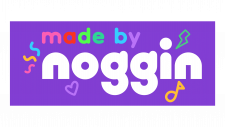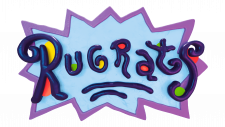Discovery Channel Logo
Discovery Channel, owned by Discovery, Inc., delves into reality-based, informative programming, exploring various themes like science, technology, and nature. Pioneering in the global infotainment sector, it broadcasts in over 220 countries, making it a significant player in the international market. Current endeavors emphasize digital expansion, involving their platform discovery+, which provides a plethora of on-demand content. Their market reach, entailing both traditional TV broadcasting and digital streaming, spans across diverse demographics, curating content that appeals to a wide array of audiences, and maintaining a solid foothold in the global entertainment industry.
Meaning and history
Discovery Channel, a beacon in the world of infotainment, emerged in 1985 as an ambitious endeavor by John Hendricks. Envisioned as a channel for education and exploration, its inaugural broadcast was a leap into the unknown, showcasing views of Earth from space.
Initially, the channel’s content was sourced mainly from BBC documentaries, fostering an early partnership that set the bar for quality. Over time, as viewership and resources grew, Discovery began producing its original content, turning sights to topics like nature, science, and human adventures.
By the ’90s, the channel had solidified its position in the cable market. Its success spurred the creation of multiple sub-channels like Animal Planet and the Science Channel, each targeting niche audiences with specialized content.
A turning point in ownership and direction came in 2008 when Discovery Communications (the parent entity) became a publicly-traded company. This move laid the foundation for a series of acquisitions and partnerships. The acquisition of Scripps Networks in 2018 was a notable one, bringing channels like HGTV and Food Network under the Discovery umbrella.
The digital era marked another evolution. Recognizing the shift in content consumption, Discovery ventured into streaming with the introduction of discovery+ in 2020, encapsulating its vast library and new exclusive content for online audiences.
Today, owned by Discovery, Inc., the channel stands as a testament to the vision of making the world’s mysteries and marvels accessible to all. Its journey, from a single channel to a global multimedia powerhouse, reflects an enduring commitment to curiosity, exploration, and storytelling.
1985 – 1987
The inaugural emblem deviated from typical designs. Instead of showcasing a planet, it illustrated a segment of the world map, capturing both American continents, Greenland, Africa, and a portion of Western Europe. This depiction took the form of a rounded rectangle, mirroring the appearance of a television screen. The presence of delineated longitudes and latitudes subtly indicated its map identity.
Beside the graphical representation, on its left, the word “THE” was inscribed. Positioned below this visual, “Discovery” was stacked atop “CHANNEL”. The typography employed two variations of the Gill Sans MT typeface: the Regular and the Extra Bold. In terms of color, the emblem was characterized by a minimalist black and white palette, emphasizing its stark contrast and simplicity. The design’s intention was to blend a sense of worldly exploration with the medium of television, creating a symbolic intersection of discovery and broadcast.
1987 – 1995
In the subsequent reimagining, the spotlight shifted predominantly to the channel’s moniker. Its prominence was cemented with “Discovery” emblazoned centrally in the Aurora Bold Condensed typeface. Both “THE” and “CHANNEL” became almost inconspicuous, rendered in slender, uppercase Futura letters, dwarfed by the primary title.
The global map illustration was no longer present. However, a subtle nod to celestial bodies was introduced at the base — a diminutive black semicircle subtly encroaching upon the “sco” of “Discovery.” This could represent an emergent sun, given its absence of geographical features. Alternatively, some speculated it to be an echo of the iconic Vitruvian Man sketch crafted by the multifaceted Renaissance genius, Leonardo da Vinci, drawing parallels between exploration, human ingenuity, and the channel’s mission. The revamped design was symbolic of the channel’s evolving vision and its dedication to a global perspective on discovery and learning.
1995 – 2000
In 1995, the descriptor “The” was omitted from the channel’s designation, prompting a logo refresh. While retaining the Aurora Bold Condensed and Futura typefaces, the latter word gained prominence through an enhanced size and boldness. A shift in color was also witnessed; for the inaugural time, the text adopted a shade of purple.
Modern computer graphics introduced a visually arresting globe, positioned on the bottom left, exuding realism. Instead of intricate terrain details, the designers chose to overlay the globe with wisps of white clouds, obscuring the land beneath. This vibrant orb, illuminated from its left, cast a gradient shadow towards its right, adding depth and dimension. This gradient motif was similarly reflected in a blue horizontal stripe, situated directly beneath the channel’s name, infusing a sense of continuity and fluidity to the overall design.
2000 – 2008
As the new millennium dawned, the “Discovery” inscription reverted to a bold black hue. Conversely, “CHANNEL” underwent a transformation, adopting a pristine white shade and finding a new position within a cerulean rectangle below. The typography experienced a transition too; a balanced and harmonious Helvetica typeface was selected. While the globe retained its original position, its palette was slightly muted, giving it a more subdued appearance. The overall reimagining conveyed a sense of evolution and adaptability, signaling the channel’s commitment to staying current while honoring its legacy and its enduring spirit of exploration.
2008 – 2009
In 2007, the renowned Boston firm, Viewpoint Creative, undertook a comprehensive overhaul of the channel’s emblematic representation. They opted to supplant the timeless Aurora Bold Condensed with the robust Gotham typeface, characterized by its compacted lettering. Additionally, the secondary word was rendered in a slender sans-serif style, notable for its expansive spacing between each character. The chosen palette for the textual elements was an unadulterated black. The once-present cerulean stripe below was phased out, leading to the relocation of the globe. It now nestled snugly at the lower-left quadrant of the letter “D,” providing a refreshed, modern feel while maintaining the essence of the brand’s exploratory spirit. This redesign signaled the channel’s commitment to evolution while retaining its foundational ethos.
2009 – 2013
The former emblem had a brief tenure of just two years. Following this, Studio Royale embarked on an extensive brand transformation, introducing multiple alterations to the logo. They refined the typography, ensuring harmony between the size of the letters and the spaces between them. Moreover, the experts meticulously reworked the globe’s design, rendering it more luminous and ensuring it stood distinct from the “D.” This meticulous revision led to a discernible delineation between the aquatic and terrestrial regions on the globe. The entire revamp underscored the channel’s dedication to clarity and precision, aptly mirroring its core ethos of discovery and exploration.
2013 – 2016
Throughout the metamorphosis of the Discovery Channel’s insignia, only the iconic “D” intertwined with the globe has withstood the test of time. The nuanced use of gradients endowed the letter with a lustrous silver hue, bordered by a slender contour, imparting a palpable depth and 3D effect. The depiction of Earth underwent an intricate transformation, now showcasing a vivid tapestry of landmasses, islets, verdant forested regions, wisps of white clouds, and vast azure aquatic stretches. This meticulous attention to detail not only magnified the emblem’s visual appeal but also encapsulated the channel’s dedication to capturing the majesty and intricacies of our planet.
2016 – 2019
The designers emphasized the American continent, subtly softening the globe’s upper boundaries. Positioned below a sleek, two-dimensional “D” was the familiar “Discovery” label, articulated in the Gotham typeface. Every component of this design was encased within a bold, expansive black circle. This renewed vision for the logo brought together elements of geographic focus, typographic finesse, and a circumspective design approach, encapsulating the brand’s essence in a modern, yet timeless manner. The encapsulating ring signified unity and completeness, underlining the channel’s holistic approach to exploration and knowledge dissemination.
2019 – Today
In 2019, Roger unveiled a revamped stationary emblem for the channel. The design maintained the “Discovery” label but rendered it in the sleek Circular typeface. The standalone uppercase “D” character was eschewed. Remarkably, the globe motif was ingeniously fused into the initial letter of the word, taking the place of its vertical segment. The creative team journeyed through various globe interpretations, both abstract and traditional, before landing on the ultimate manifestation. Encased within a circular boundary, a conventional world map was depicted, employing the art of negative space to represent the continents. This innovative design approach not only modernized the brand’s image but also reinforced its commitment to global exploration and understanding.




















